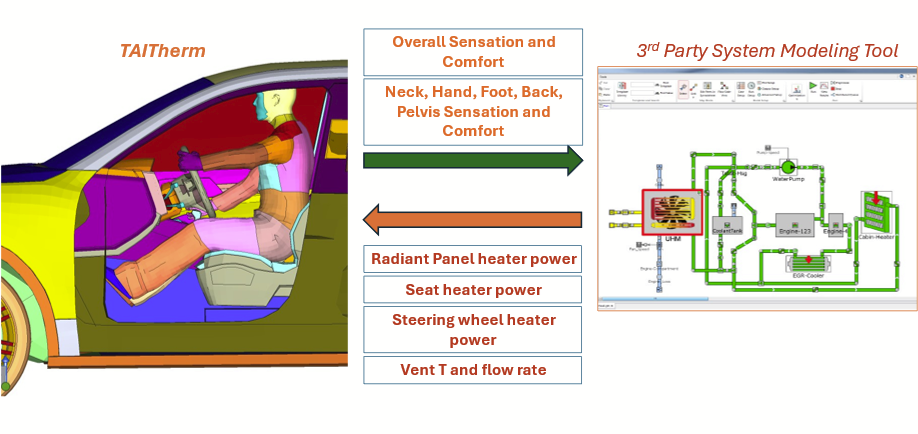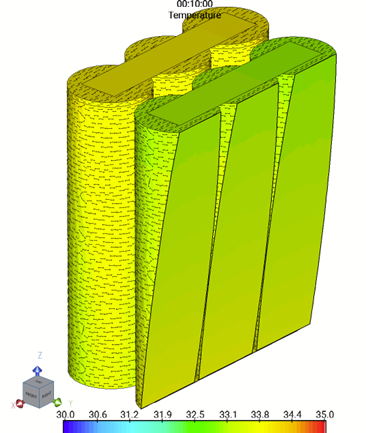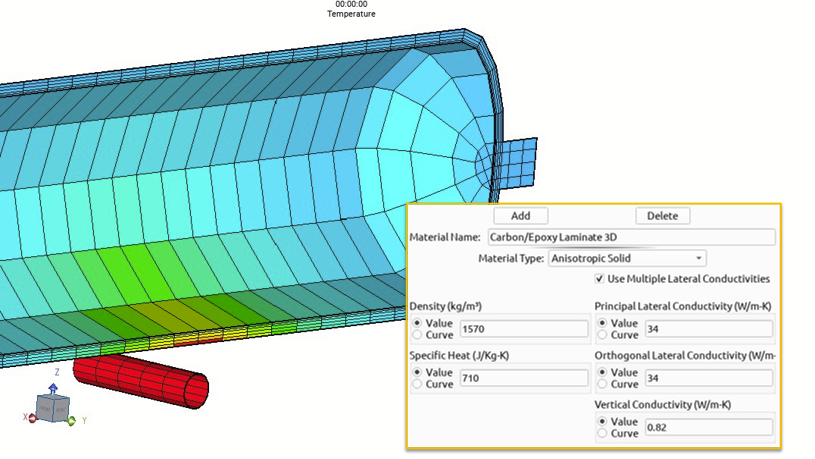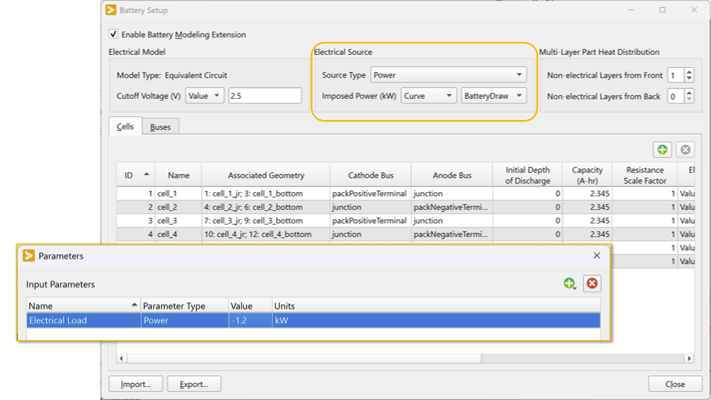We’ve continued to expand TAITherm’s capabilities to deliver greater accuracy and flexibility in thermal and comfort simulations. The 2025.2 version focuses on advancing human thermal comfort modeling and improving the fidelity of battery cell analysis, giving engineers deeper insight into real-world performance and design optimization.
Advanced Cabin and Human Thermal Comfort Coupling
Building on previous releases, we’ve significantly enhanced our FMU (Functional Mock-up Unit) export capabilities to improve human thermal comfort simulations within system-level designs.
- Segment-Level Comfort Feedback: Continuing to build on the FMU export capabilities of previous releases, human thermal sensation and comfort can now be exchanged at the segment level through output parameters. This allows providing feedback on how hot or cold individual body parts are for controlling local thermal effectors such as heated seats, steering wheels, and radiant panels.
-
Comprehensive 1D/0D System Coupling: When combined with whole-body sensation and comfort, this provides a comprehensive coupling to 1D/0D system simulations for advanced cabin thermal comfort and HVAC design.

Automotive & Battery Thermal Advancements
We’ve focused on improving the fidelity and flexibility of battery cell modeling to better support the evolving needs of electric vehicle development.
- Volume Elements for Battery Cells: You can now model battery cells using volume elements in addition to the existing shell elements. This allows for more detailed and accurate thermal analysis of the cell's internal structure and heat conduction paths.
- Power Input for Battery Pack Load: When specifying the load on a battery pack, you now have the flexibility to input this as power instead of being limited to only current. This simplifies the input process and aligns with how load is often defined in system-level thermal management.
-
Anisotropic Conduction in Volume Elements: You can now model materials such as carbon fiber, fiberglass composite, or battery cells with dissimilar conductivities in each of the cardinal directions. This produces more accurate heat transfer and temperature predictions for these scenarios.



Comments
0 comments
Article is closed for comments.